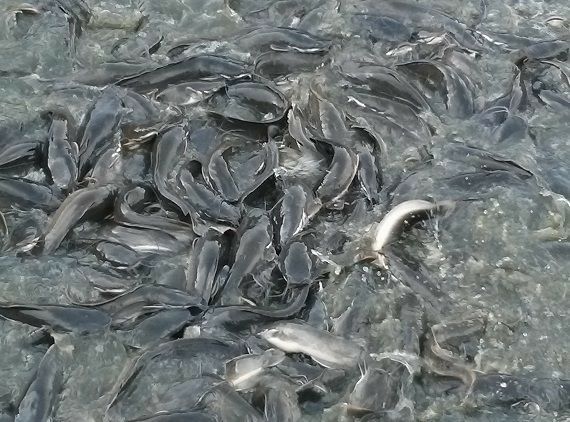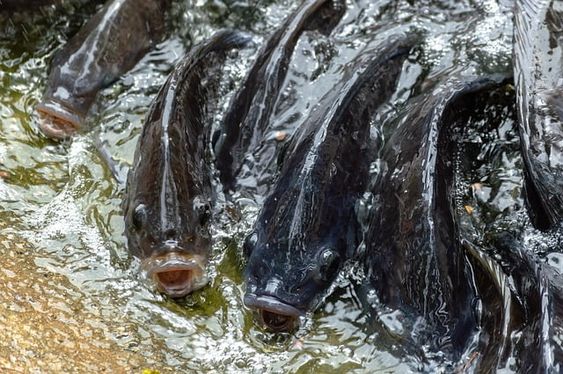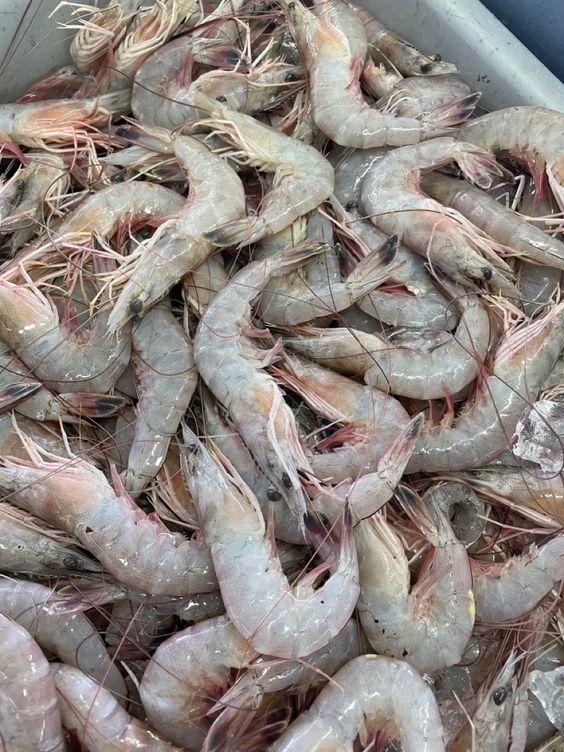The Importance of Catfish Management in 2024: Enhancing Growth, Profitability, and Sustainability
Catfish farming is a highly lucrative industry, playing a significant role in the global aquaculture market. Catfish are a preferred choice for many fish farmers due to their fast growth rates, adaptability to different water environments, and relatively simple management requirements. Catfish farming, when done efficiently, can yield significant economic benefits. A key factor that determines the success of a catfish farm is catfish management.
Catfish management encompasses all the activities, decisions, and techniques involved in ensuring that a catfish farming operation runs smoothly, efficiently, and profitably. From the construction of ponds to the feeding, water quality control, and disease prevention, the management of a catfish farm requires attention to detail and adherence to best practices to maximize the health and growth rate of the fish.
Contents
Importance of Catfish Management
Effective catfish management is critical to the success and sustainability of a farming operation, offering several key benefits that improve productivity, profitability, and environmental responsibility. Proper management practices involve the careful regulation of water quality, feeding, disease control, and overall farm operations. Below are the main reasons why good catfish management is essential:
- Enhanced Fish Growth: A well-managed catfish farm ensures optimal growth conditions for the fish. By providing the right balance of nutrients, maintaining suitable water quality, and managing stocking densities, catfish grow at their maximum potential. This results in faster maturation, shorter production cycles, and higher yields, allowing farmers to harvest more frequently and improve overall productivity.
- Reduced Mortality Rates: Managing water quality, controlling diseases, and implementing biosecurity measures significantly reduce the risk of fish mortality. Poor water conditions or the spread of disease can decimate stock, leading to massive financial losses. Effective management practices, such as regular water testing and preventative health measures, help to keep fish healthy and minimize losses, ensuring higher survival rates and increased profitability.
- Increased Profitability: Proper feeding practices, such as providing the right type and amount of feed, help reduce waste while ensuring that catfish grow efficiently. Coupled with reduced mortality and faster growth, these practices boost production and lower operating costs. As a result, well-managed catfish farms can maximize profitability through higher yields and more efficient use of resources.
- Sustainability: A sustainable approach to catfish farming is crucial for long-term success. Good management practices ensure efficient water usage, waste management, and environmental stewardship. By reducing the farm’s ecological impact, sustainable farming helps maintain the health of aquatic ecosystems and preserves the farm’s productivity for future generations.
- Consistent Production Quality: Implementing structured management techniques ensures that catfish are consistently produced at a high quality. Consistency in size, health, and taste is essential for meeting market demands and maintaining customer satisfaction, helping the farm maintain a competitive edge in the marketplace.

Key Components of Catfish Management
1. Pond Design and Construction
The foundation of any successful catfish farm lies in the design and construction of the ponds. There are several factors to consider when setting up a catfish pond, including:
- Size and Depth: The size of the pond will depend on the scale of the farm, while the depth should ideally range between 1 to 2 meters to ensure proper oxygen circulation and water quality.
- Water Source: A reliable and clean water source is critical. The water should be free of harmful chemicals, and there should be a system in place to replace or refresh the water when necessary.
- Drainage System: Ponds should have an efficient drainage system for removing waste and preventing stagnation of water, which can lead to poor water quality and disease.
- Aeration: Installing aeration systems to maintain adequate oxygen levels is crucial for fish health, especially in densely stocked ponds.
2. Water Quality Management
Catfish Management,Water quality is one of the most critical factors in catfish farming, as it directly impacts the health and growth rate of the fish. Some key water parameters that need to be regularly monitored and controlled include:
- Dissolved Oxygen (DO): Catfish require adequate oxygen levels to grow and stay healthy. Oxygen levels should be maintained between 5-6 mg/L.
- pH Levels: The pH level of the pond water should be kept between 6.5 and 9.0. Too acidic or too alkaline water can harm fish health.
- Temperature: The ideal temperature range for catfish farming is between 25°C and 30°C. Cold water slows down growth, while excessively warm water can stress the fish.
- Ammonia and Nitrite Levels: Waste from the fish, excess feed, and decaying matter can lead to high ammonia and nitrite levels, which are toxic to fish. Proper waste management and water changes are essential to keep these levels in check.
- Water Replacement: Regular partial water changes help maintain water quality and remove harmful substances. In intensive farming, water recirculation systems can help reduce the amount of water needed.
3. Stocking Density
Stocking density refers to the number of fish placed in a given area of water. High stocking densities can increase yield, but overcrowding can lead to stress, slower growth rates, and higher disease risks. Balancing the right stocking density is crucial to achieving optimal growth rates and reducing losses.
- Recommended Stocking Density: In semi-intensive systems, stocking densities are usually between 2-5 fish per square meter. In more intensive systems with better management and aeration, densities can go as high as 10-20 fish per square meter.
- Fingerling Quality: Selecting high-quality fingerlings is essential. Fingerlings should be healthy, of uniform size, and free from deformities or diseases.
4. Feeding and Nutrition
Proper feeding is one of the most important aspects of catfish management. The feed must provide the necessary nutrients for growth, health, and disease resistance. The main considerations for feeding include:
- Feed Quality: Feed should have a high protein content (about 28-35% for catfish) and be balanced with fats, vitamins, and minerals. The feed must be formulated specifically for catfish to meet their dietary needs.
- Feeding Frequency: Catfish are typically fed twice a day, once in the morning and once in the evening. The feeding frequency and amount depend on the age and size of the fish.
- Feed Conversion Ratio (FCR): This is a measure of how efficiently feed is converted into body mass. The lower the FCR, the more efficient the feed. For catfish, the FCR usually ranges between 1.5 and 2.0.
- Avoid Overfeeding: Overfeeding leads to waste and can deteriorate water quality due to uneaten feed settling at the bottom of the pond. It can also increase the risk of diseases.
5. Disease Management and Biosecurity
Catfish Management,Disease outbreaks are one of the biggest risks in catfish farming. Implementing biosecurity measures can help prevent the introduction and spread of diseases.
- Quarantine New Stock: New fingerlings should be quarantined for a few weeks before being introduced to the main ponds to prevent the spread of any potential diseases.
- Monitor Fish Health: Regularly observe the fish for any signs of disease, such as erratic swimming, loss of appetite, or unusual spots and lesions.
- Water Quality Control: Maintaining good water quality is one of the best ways to prevent diseases, as poor water conditions can weaken the fish’s immune system.
- Vaccination: In some cases, vaccines are available for specific diseases that affect catfish. Consult with a veterinarian for disease-specific vaccines.
- Use of Probiotics: Adding probiotics to the water or feed can help improve fish health by enhancing their gut flora and overall immune system.
6. Harvesting
Catfish Management,Knowing when and how to harvest catfish is crucial for maximizing profits. Harvesting too early may result in underweight fish, while waiting too long may increase the risk of disease or other issues. Key points include:
- Harvest Size: Catfish are usually harvested when they reach a marketable size, typically between 0.5 kg and 2 kg, depending on the market demand.
- Selective vs. Complete Harvesting: In selective harvesting, only the larger fish are removed from the pond, allowing smaller fish more time to grow. In complete harvesting, all the fish are removed at once, and the pond is then restocked.
- Post-Harvest Handling: Once harvested, catfish should be handled with care to avoid stress and physical damage, which can reduce their market value. They should be processed, chilled, or frozen as soon as possible to maintain freshness.
Strategies for Successful Catfish Management
1. Integrated Aquaculture Systems
Catfish Management,One way to improve the sustainability and profitability of catfish farming is through integrated aquaculture systems. These systems combine fish farming with other forms of agriculture, such as crop production or livestock farming. The waste from one system can serve as a resource for another, reducing environmental impact and increasing efficiency.
2. Recirculating Aquaculture Systems (RAS)
Catfish Management,Recirculating aquaculture systems are closed-loop systems that filter and recirculate water within the farm. This technology can significantly reduce water usage and maintain better control over water quality. Although the initial investment is high, RAS can be more efficient in the long run and are ideal for intensive catfish farming operations.
3. Utilizing Data and Technology
Catfish Management,Technology plays an increasingly important role in modern aquaculture. Tools such as automated feeders, sensors for water quality monitoring, and mobile apps for farm management can greatly enhance productivity and ease of management. These technologies allow farmers to monitor their operations in real time and make data-driven decisions.
4. Diversifying Farm Products
Catfish Management To mitigate risks and improve profitability, catfish farmers can diversify their product offerings. In addition to selling whole fish, farmers can explore the production of processed catfish products such as fillets, smoked fish, or fish oil. Value-added products often command higher prices in the market, providing an additional revenue stream.
5. Sustainable Practices
Catfish Management,Sustainability is a growing concern in the aquaculture industry. Implementing practices that minimize environmental impact, such as using eco-friendly feed, managing water resources efficiently, and reducing the use of antibiotics, can help ensure the long-term viability of catfish farming operations. Sustainable farms are more likely to attract premium markets that prioritize ethical and environmentally conscious products.
Advantages of Catfish Farming
- High Demand: Catfish are popular in many parts of the world due to their taste, ease of preparation, and nutritional benefits. This high demand makes catfish farming a lucrative venture.
- Low Input Costs: Compared to other fish species, catfish can thrive on lower-quality feed, reducing the overall input costs for farmers.
- Fast Growth Rates: Catfish grow quickly, allowing farmers to harvest and sell their stock within a shorter time frame, leading to faster returns on investment.
- Adaptability: Catfish are highly adaptable and can thrive in various environmental conditions, making them suitable for different regions and climates.
- Profitability: With proper management, catfish farming can generate substantial profits due to the high yields, relatively low operating costs, and growing demand for fish.
Topic Suggestions for Further Exploration
- Catfish Breeding and Hatchery Management: A detailed look into breeding practices, selecting broodstock, and managing hatcheries to produce high-quality fingerlings.
- Water Quality Optimization in Catfish Farms: In-depth exploration of methods and technologies for maintaining optimal water quality.
- Disease Prevention and Treatment in Catfish Farming: A guide to the most common diseases affecting catfish and how to manage them.
- The Role of Technology in Modern Catfish Farming: Exploring innovations like automated feeding systems, water quality sensors, and data-driven management practices.
- Catfish Feed Formulation and Nutrition: How to formulate feed that meets the nutritional needs of catfish while minimizing costs.
- Sustainable Catfish Farming Practices: Strategies for reducing the environmental impact of catfish farming, including waste management and eco-friendly practices.
- Marketing and Selling Catfish Products: Insights into how to successfully market catfish, from wholesale to direct-to-consumer sales and value-added products.

Management and Regulation of Fisheries
Fisheries in Indonesia are managed by the Ministry of Marine Affairs and Fisheries (KKP), which regulates, monitors, and promotes sustainable fishing practices. Key management practices include:
1. Licensing and Permits:
Catfish Management Fishing vessels, both industrial and small-scale, are required to obtain permits to fish in Indonesian waters. The government has enforced strict licensing to control illegal, unreported, and unregulated (IUU) fishing, which is a major issue in the region.
2. Fishing Zones:
Catfish Management,Indonesia’s fisheries are divided into zones that regulate where certain types of fishing activities can take place. For example, small-scale fishers (vessels under 10 GT) are allowed to fish in coastal waters, while larger commercial vessels must operate further offshore.
3. Sustainability Measures:
Catfish Management,The Indonesian government has implemented several sustainability measures to ensure the long-term health of its fishery resources, including:
Seasonal Fishing Bans: Periodic fishing bans in certain areas to allow fish populations to recover during spawning seasons.
Marine Protected Areas (MPAs): Establishing MPAs where fishing is restricted or prohibited to conserve biodiversity.
Quota Systems: Regulating how much fish can be caught, especially for high-value species like tuna and shrimp, to prevent overfishing.
4. IUU Fishing Crackdown:
Catfish Management,The government has taken a strong stance against IUU fishing by impounding and sinking vessels caught fishing illegally in Indonesian waters, particularly foreign vessels. This crackdown has helped protect Indonesia’s fisheries from exploitation and promote the rights of local fishers.
Catfish management is the backbone of successful catfish farming. By focusing on key aspects such as pond design, water quality, feeding, and disease prevention, farmers can maximize growth rates and yields while ensuring the sustainability and profitability of their operations. With the growing demand for seafood and the continued development of farming technologies, catfish farming offers immense potential for those willing to invest in good management practices.







